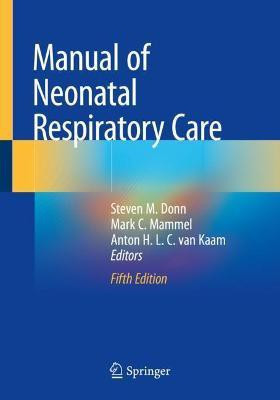Manual of Neonatal Respiratory Care(English, Paperback, unknown)
Quick Overview
Product Price Comparison
Respiratory care is the largest overall component of neonatal intensive care, and the fifth edition of the Manual of Neonatal Respiratory Care is the leading bedside guide for all aspects of respiratory care in the neonatal intensive care unit. Its easy-to-read outline format is simple yet comprehensive and covers all aspects of lung disease in the newborn infant, including embryology, principles of mechanical ventilation, procedures and techniques, monitoring, devices, adjunctive therapies, management of respiratory illness, complications, outcomes, and related issues. The latest edition includes fully revised and updated information, coverage on new equipment and devices, and an expanded authorship to enhance its international appeal. The new edition also features two new co-editors, Dr. Mark Mammel and Dr. Anton Van Kaam, internationally recognized experts in the field who bring a fresh perspective to the manual. Divided into sixteen sections, the book begins with a section on lung development and maldevelopment, specifically covering the development of the respiratory system, malformations, deformations, disorders of the neonatal airway, and developmental lung anomalies. The second section reviews the principles of mechanical ventilation, with coverage on such topics as spontaneous breathing, oxygen therapy, oxygen toxicity, pulmonary mechanics, and ventilator parameters. The third section of the manual outlines procedures and techniques, including neonatal resuscitation, laryngoscopy and endotracheal intubation, and tracheostomy. The following section dives into the monitoring of the ventilated patient, specifically focusing on continuous monitoring techniques, clinical controversies in pulse oximetry, and echocardiography. The next section spotlights noninvasive ventilatory techniques, such as nasal interfaces, humidified high-flow nasal cannula therapy, and sustained inflation. The sixth section of the manual focuses on ventilatory modes and modalities, with coverage on intermittent mandatory ventilation, pressure support ventilation, and pressure control ventilation. The following section segues into high-frequency ventilation, reviewing general concepts, high-frequency jet ventilation, and high-frequency oscillatory ventilation. The eighth section centers around commonly used neonatal ventilators, such as the DRAEGER VN500 ventilator, the AVEA ventilator, and the Twinstream ventilator. The ninth section reviews adjunctive therapies, including hemodynamic support, nutritional support, the use of sedation and analgesia, inhaled nitric oxide therapy, and ECMO. The tenth section shifts gears to spotlight the management of common neonatal respiratory diseases, with chapters on mechanisms of respiratory failure, tissue hypoxia, respiratory distress syndrome, persistent pulmonary hypertension, and pulmonary hypoplasia/agensis among others. Section eleven reviews the etiology, pathogenesis, and management of bronchopulmonary dysplasia, as well as the long-term outcome of newborns with this chronic lung disease. The next section presents complications associated with mechanical ventilation, such as thoracic air leaks, neonatal pulmonary hemorrhage, and neurologic complications. The following two sections spotlights ethical, legal and other considerations, among them nursing care of the ventilated infant, long-term ventilator dependency, home ventilation, withdrawal of ventilatory support, and medical liability and risk management. The fifteenth section focuses on research and literature, with coverage on interpreting medical literature, data collection and assessment of respiratory outcomes, and contemporary classics in neonatal respiratory care. The final section presents ventilatory case studies. The text also features over 300 high-yield radiographic images, figures, tables, and algorithms.


